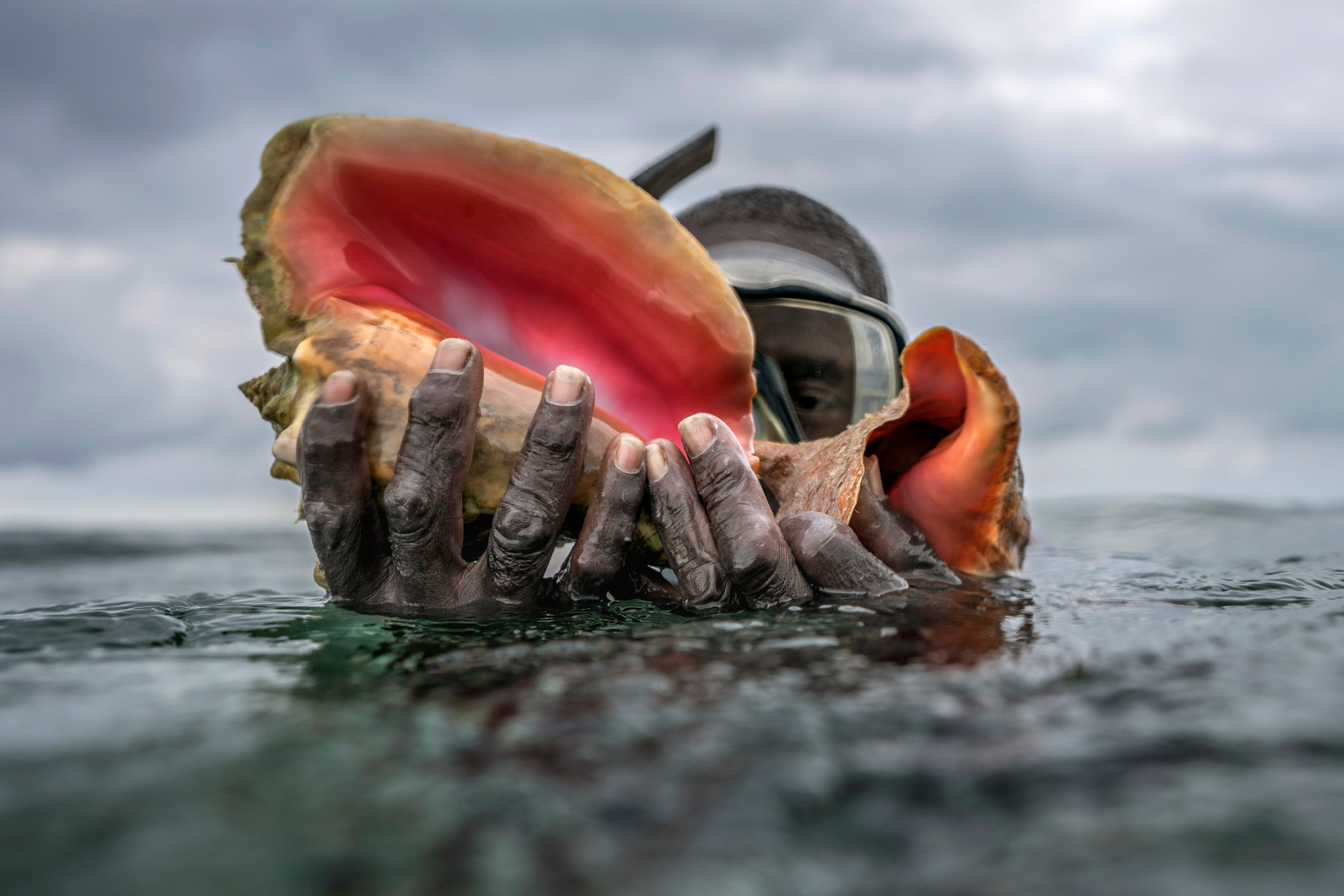Takeaways from AP report on overfishing's threat to conch
No longer a theoretical threat, overfishing across the globe has wiped out species from areas where they once thrived

Your support helps us to tell the story
From reproductive rights to climate change to Big Tech, The Independent is on the ground when the story is developing. Whether it's investigating the financials of Elon Musk's pro-Trump PAC or producing our latest documentary, 'The A Word', which shines a light on the American women fighting for reproductive rights, we know how important it is to parse out the facts from the messaging.
At such a critical moment in US history, we need reporters on the ground. Your donation allows us to keep sending journalists to speak to both sides of the story.
The Independent is trusted by Americans across the entire political spectrum. And unlike many other quality news outlets, we choose not to lock Americans out of our reporting and analysis with paywalls. We believe quality journalism should be available to everyone, paid for by those who can afford it.
Your support makes all the difference.No longer a theoretical threat, overfishing across the globe has wiped out species from areas where they once thrived. And one result is that it’s taken off the table beloved culturally important dishes.
In the Bahamas, government officials and conservationists are working to save the conch – a marine snail that’s central to the island nation’s diet, economy and identity.
The overfishing challenges faced by Bahamians are mirrored in places as different as Senegal, where overfishing has taken away white grouper, long a main ingredient in the national dish of thieboudienne, and the Philippines, where it has depleted small fish such as sardines that are used in kinilaw, a raw dish similar to ceviche.
WHAT’S HAPPENING IN THE BAHAMAS?
“When I was a child, we never had to go that far to get conch,” said Tereha Davis, 49, whose family has fished for conch for five generations in the Bahamas.
Davis and others remember when someone could walk into the water from the beach and pick up conch. Now conch fishers have to go further and further from shore - sometimes as far as 30 miles.
Queen conch is the main food species. According to government authorities and conservation agencies, its decline has been drastic. A 2011 survey of the Exuma Cays, a critical fishing area, found that the density of adult conch had declined by nearly 91% on the islands’ shelf over a 20-year period, according to documents from the Food and Agriculture Organization of the United Nations.
The depletion followed years of heavy harvesting - fishers who harvested about 1.7 million pounds of conch in the 1970s were up to more than 14 million pounds by 2006, the documents state. The loss of conch intensified on several fishing grounds around the country starting in the 1990s.
Experts say the conch fishery could no longer be commercially viable in as little as six years.
WHAT’S TO BLAME?
Experts say that there are several factors contributing to the overfishing.
Andrew Kough, a scientist with Chicago's Shedd Aquarium who has researched conch in Bahamian waters, said one challenge the shellfish face is the lack of enforcement of existing laws, which restrict fishing by foreign vessels. Industrialized fishing fleets from other nations have overexploited some areas where conch grow, he said. Bahamian conch fishers point to such nearby nations as the Dominican Republic and Jamaica, which have stricter restrictions on conch fishing than the Bahamas.
Lindy Knowles, senior science officer with Bahamas National Trust, says that the Bahamas’ national association with conch is also a large part what has led to the decline, with strong local demand leading to its depletion in a number of areas in the country.
With such high demand, it’s difficult to conch to reproduce fast enough to sustain the population, Knowles said.
IS CLIMATE CHANGE A FACTOR:
The warming climate makes things worse.
Climate change has caused unpredictable weather that has disrupted and damaged conch habitats and fishing grounds.
Seagrass beds where conchs gather in large grounds have been severely damaged by storms such as Hurricane Maria in 2017, leading to thinning herds, scientists say.
Another problem is growing acidification with the warming ocean, which damages conch shells. And changing sea temperatures have disrupted migration patterns. That is likely to disrupt the reproductive season, according to a 2022 study in the journal PLOS One.
WHAT'S BEING DONE TO SAVE CONCH?
The government in the Bahamas is exploring several ways to save conch.
Part of the solution is more aggressive enforcement of existing laws. And the Bahamas National Trust, a non-profit that manages national parks, is working to get fishers tools to help them measure conchs to ensure they’re big enough to harvest.
Reducing the fishery by half over the next three years, as a new proposal promises to do, is one way to potentially stave off the loss of conch, Knowles said.
And pressure on conch could be reduced from outside. The U.S., the largest importer of conch from the Bahamas, is considering listing conch under the Endangered Species Act, which could halt imports into the country.